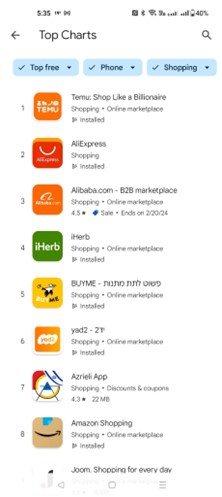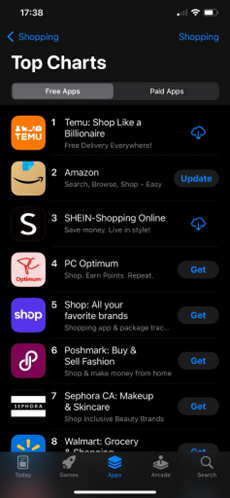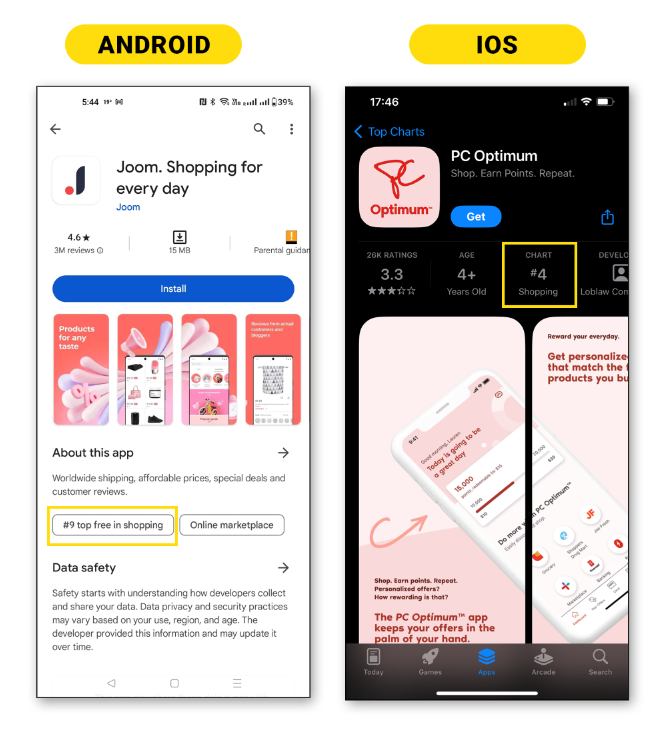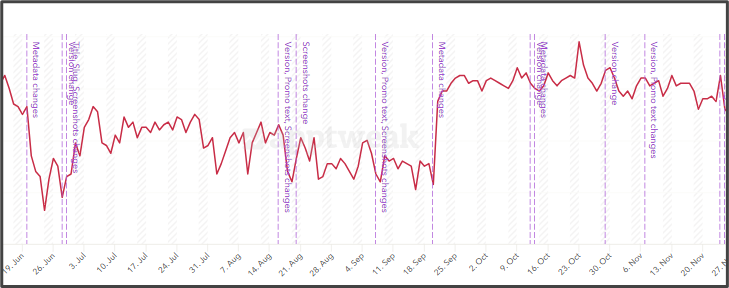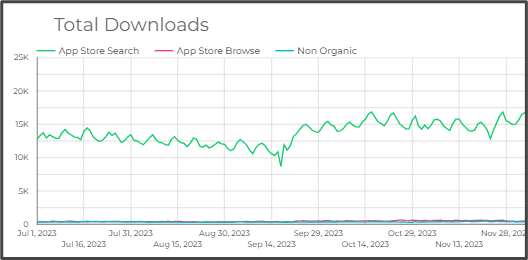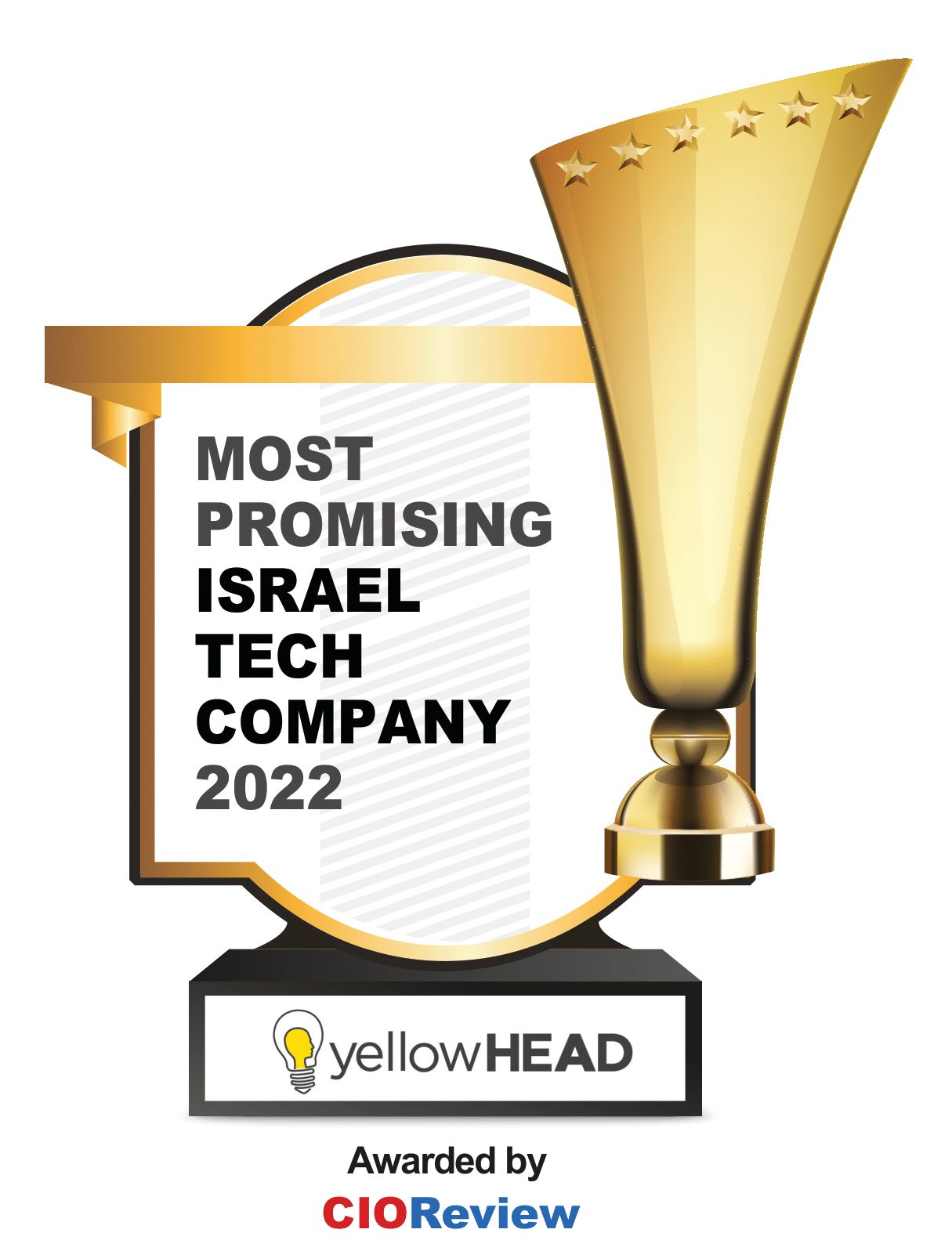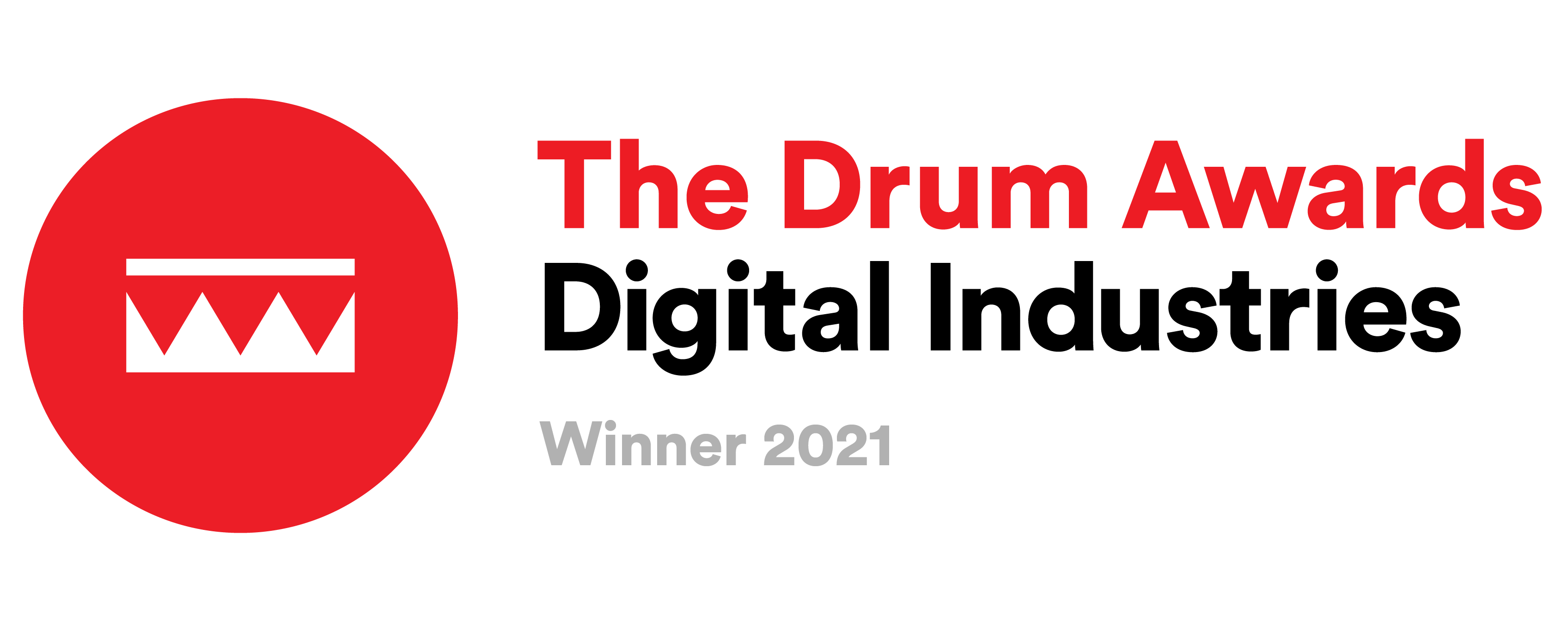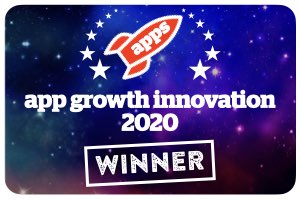Discover How App Store Top Charts Impact your App’s Keywords

At yellowHEAD’s ASO team, analyzing KPIs includes closely monitoring the relationship between keyword rankings and app store category rankings. This strategic approach allows us to gauge success not only by the number of installs but also by the visibility of the app.
What exactly are the App Store’s top charts and category rankings?
In both the App Store and Google Play, app store ranking (app store charts) sorts all apps into different groups. These categories help users easily find new apps or games they’re interested in. When browsing the store, users can check out categories to find apps that meet their specific needs. For example, in the “shopping” category, users can discover different ways to buy groceries, clothes, and more.
In the past, the category ranking top charts were easily visible on both stores, appearing as a list when users explored the category field. Nowadays, it’s a bit trickier to find this section because featured apps take precedence. However, this doesn’t diminish the significance of category ranking. It’s still prominently displayed on the product page, boosting your app’s credibility and influencing users to install it.
The ranking of apps within categories varies across different markets based on their popularity.
Variations in the Top Charts Between Android and iOS
In the app store, you have the option to select not just one main category but also two subcategories, which boosts your app’s visibility across multiple categories.
On Google Play, however, you’re limited to choosing only one category. But you can also add up to five tags to describe your app’s content and features. These tags can influence where your app shows up on Google Play and the similar apps it’s grouped with.
While Google Play and iOS have similar categories, they’re not identical:
- Google Play offers 34 categories in the category top charts, while iOS provides 25.
- In terms of game charts, both platforms have a comparable number of categories: Google Play has 17, while iOS has 16.
Understanding the Contrasts Among App Store Charts: Free, Paid, and Grossing
The app stores classify apps into two main categories: free and paid. Apps can typically achieve either a Free & Grossing rank or a Paid & Grossing rank, but they can’t simultaneously hold both a free and paid rank.
“Free” Rank:
Free apps are available for download at no charge. Their rank is determined by the number of free downloads they receive. Consequently, apps with the highest volume of free downloads will occupy the top positions in this ranking. Only free apps are eligible for inclusion in this category.
“Paid” Rank:
Paid apps require a purchase from the store to install. Their rank is determined by the volume of paid downloads. Therefore, paid apps that accumulate the most downloads will secure higher positions in this ranking. Only paid apps can be featured here, meaning an app cannot hold both a Free and Paid rank simultaneously. It’s also important to note that the price of the download, whether an app is priced at $1 or $25, does not influence this rank; it is solely based on the volume of downloads.
“Grossing” Rank:
The Grossing rank is calculated based on an app’s total revenue, including revenue from in-app purchases and revenue generated from paid app downloads. Revenue from advertisements is not considered since this revenue doesn’t flow through the app stores’ processing systems.
What factors influence the ranking of an app in the app store?
The App Store Rank isn’t solely influenced by downloads or revenue; it’s also affected by several crucial performance metrics. We believe that six main components play a role in the algorithm and consequently affect the App Store Rank:
- New users
- App usage metrics: Session frequency and total time spent in-app
- Velocity of downloads
- App store rating
- User reviews
- Uninstall rates
How does category ranking influence the positioning of keywords?
It’s easy to see how all the different metrics and factors are interconnected, underscoring the importance of App Store Optimization (ASO) in determining an app’s success.
To illustrate this correlation, let’s look at some specific data:
For example, a particular dating app experienced an increase in its ranking on the free top charts in the US during September, coinciding with changes made to its metadata.
Source: apptweak
The rise commenced on September 18, aligning with an increase in search downloads and CVR (Conversion Rate). It’s worth mentioning that no search ads were conducted during this timeframe.
Source: yellowHEAD dashboard
Not only did downloads and category rankings go up, but there was also an increase in the total number of keywords ranking, especially within the top 10 keywords.
Source: yellowhead dashboard
Conclusion
Understanding the intricate relationship between app store category rankings, keyword positioning, and overall app performance is crucial for maximizing visibility and success in the competitive app market. At yellowHEAD’s ASO team, we specialize in analyzing key performance indicators (KPIs) to optimize app store presence effectively. By closely monitoring factors such as keyword rankings, category rankings, and user engagement metrics, we can help your app not only gain more installs but also increase its visibility and credibility. If you’re looking to enhance your app’s performance and reach its full potential, contact our ASO experts today for personalized strategies and solutions tailored to your app’s unique needs. Let us guide you towards achieving your app’s goals and standing out in the app store ecosystem.




